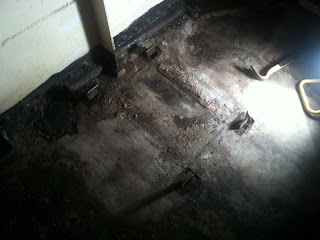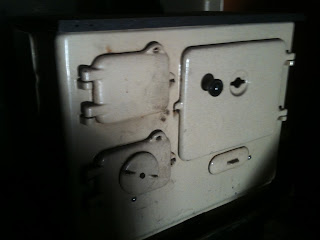Yesterday saw me clearing the stove pieces to the back of the ship. Good weight of scrap. It will never go back together as it was a complex jigsaw of interdependent pieces. Shame but there you go. When the room was clear and cleaned attention turned to the tray that the stove sat on. The condition of this was just awful. It was rusted beyond a point of recovery to a standard that would make it look ok in a renovated room. So it had to go too.
Of course it did not go without a fight. The hammer I was using to free some of the rust from the bolts broke. Maybe I was a little over enthusiastic beating the rust to death. The tray has 4 legs. Each leg welded to the metal floor. But the metal floor is under an inch or so of concrete. Out with the reciprocating saw. Solution to all problems lately. With the feet cut the tray came away easily (but as usual weighed a ton).
The last job was to put up the walls. This was done in a few hours and I am happy to say (apart from where the chimney goes through the ceiling) that room is now done. Next job is to fix the conduit and wiring. I will do this as an experiment as if there are wiring issues caused by the wood now is the time to learn before starting the wood elsewhere (next room is the new toilet).
Finally, it looks like I may have found a source of new portholes! cheap too. Watch this space.




























